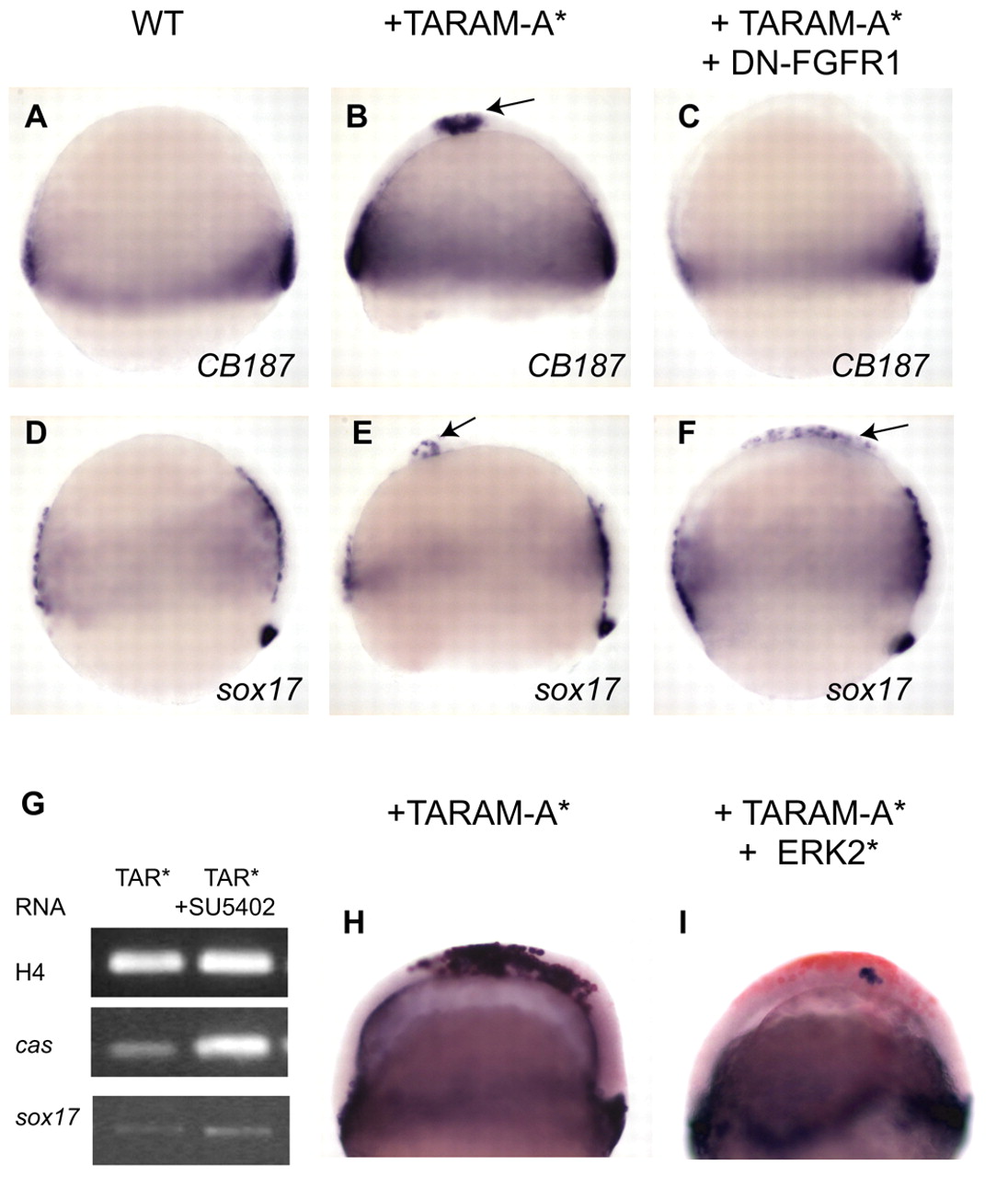Fig. 2 FGF/ERK activity antagonizes the ability of tar*/acvr1b to induce endoderm. Expression of CB187 (A-C) and sox17 (D-F) in embryos at 80% epiboly. (A,D) Wild type. (B,C,E,F) tar*/acvr1b RNA at 200 ng/µl was injected alone or in combination with DN-FGFR1 RNA at 500 ng/µl in one animal pole blastomere at the 64-cell stage embryo. Injection of tar*/acvr1b RNA alone is able to induce ectopic CB187 (B) and sox17 (E) expression at the animal pole (arrows). Co-injection with DN-FGFR1 abolishes the ability of tar*/acvr1b to induce CB187 (C), whereas DN-FGFR1 slightly increases the ability of tar*/acvr1b to induce sox17 (F). (G) RT-PCR analysis of three whole embryos injected with tar*/acvr1b RNA at 25 ng/µl. FGF signal inhibition by treatment with 15 µM of SU5402 after the 1000-cell stage enhances cas and sox17 responses. (H,I) tar*/acvr1b RNA at 1 ng/µl was injected alone or in combination with ERK2* RNA at 50 ng/µl into one blastomere of a 16-cell stage embryo. In both cases a lineage tracer (FLDX) was co-injected and later detected by immunostaining and sox17 expression was detected. (H) The clone of cells ectopically expressing sox17 in H is congruent with the territory containing the lineage tracer. (I) The size of the clone of cells ectopically expressing sox17 is greatly decreased in the presence of ERK*. (A-F,H,I) Lateral views.
Image
Figure Caption
Figure Data
Acknowledgments
This image is the copyrighted work of the attributed author or publisher, and
ZFIN has permission only to display this image to its users.
Additional permissions should be obtained from the applicable author or publisher of the image.
Full text @ Development

